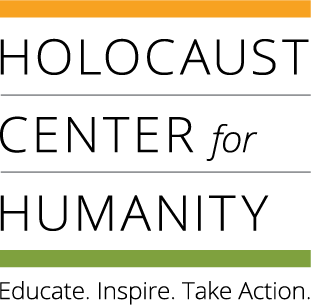
Image: Steve Adler's German passport, 1938. At the age of 8, Steve was sent on the kindertransport from Berlin to England. The kindertransport (children's transport) brought thousands of Jewish children to England from Nazi occupied territories between 1938 and 1940. More about Steve Adler.
Common Core State Standards addressed by this Overview Lesson
Flight & Rescue
As Nazi domination of Europe spread, so did Nazi terror and oppression of Jews. Jews desperately searched for ways to leave their home countries, only to find that other countries were closing their borders to Jewish refugees. Once leaving was no longer an option, many Jews went into hiding.
Despite the indifference of most Europeans and the collaboration of others in the murder of Jews during the Holocaust, individuals in every European country and from all religious backgrounds risked their lives to help Jews. Rescue efforts ranged from the isolated actions of individuals to organized networks both small and large.
Rescue of Jews during the Holocaust presented a host of difficulties. The Allied prioritization of "winning the war" and the lack of access to those who needed rescue hampered major rescue operations. Individuals willing to help Jews in danger faced severe consequences if they were caught, and formidable logistics of supporting people in hiding. Finally, hostility towards Jews among non-Jewish populations, especially in eastern Europe, was a daunting obstacle to rescue.
Over half of the German Jewish population fled Germany in the 1930s. Families with young children and elderly or sick relatives had particular challenges. The costs were high, travel could be hazardous, and many anticipated that conditions would eventually improve.
Most countries, including the United States and Britain, put up obstacles to immigration and strictly limited how many Jews could be admitted. Searching for ways to leave became a full-time job. Many Jews escaped to neighboring countries only to have Germany soon invade and occupy their new homes. The Nazi campaign against the Jews spread quickly. When escape was no longer possible, many sought places to hide. A small percentage of non-Jews risked their live s, and the lives of their families, to help Jews to survive.
Holocaust Survivor Video Testimony Clips
Questions
1. What pressures and motivations may have influenced the decisions of rescuers? Are these factors unique to this history or universal?
2. How can societies, communities, and individuals reinforce and strengthen the willingness to stand up for others?
3. a. What possible reasons can you think of that caused countries other than Germany – including the United States – to close or strictly limit their borders to Jewish refugees?
b. What reasons underlie today’s U.S. policy strictly limiting the number of refugees allowed to enter this country?
c. Do you believe the U.S. should be more – or less – willing to welcome more people forced to flee their home countries due to human rights violations, war, persecution and natural disasters? Why/why not?
